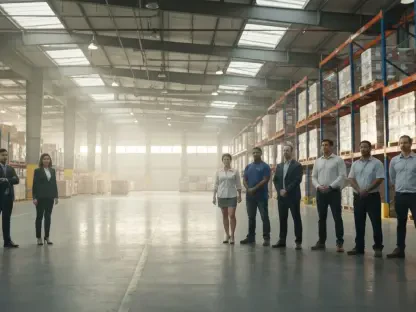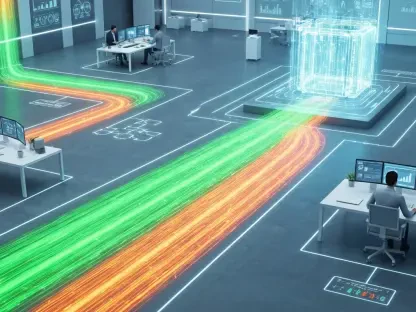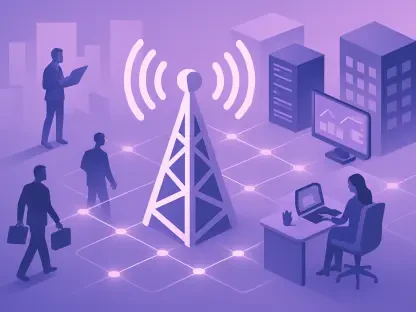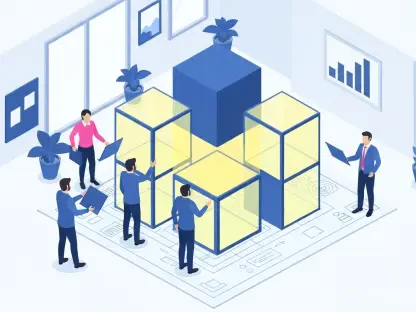In the sprawling landscape of modern transportation, the integration of data stands as a pivotal force reshaping industry boundaries and operational efficiency. The Transport Technology Forum (TTF) annual conference serves as a significant gathering for this transformation. At the forefront, Clearview Intelligence emerges as a champion in smart infrastructure and digital technology, providing sustainable solutions for various authorities. During the conference, Ralph Bates, Head of Business Development for England and Wales, will delve into how current perceptions can evolve through the strategic integration of transport data. His presentation aims to illuminate the potential of data in enhancing travel efficiency, energy savings, and improving safety measures, providing a futuristic glimpse into the transport sector.
The Power of Integrated Data in Transportation
Optimizing Decision-Making Processes
Integrated data plays a critical role in refining decision-making processes, enabling transportation networks to function more seamlessly and sustainably. By uniting diverse data streams across different systems, companies like Clearview Intelligence allow decision-makers to gain a nuanced understanding of traffic patterns, road conditions, and energy consumption. These insights facilitate proactive responses to issues, minimizing inefficiencies and mitigating risks. For instance, the use of advanced analytics can predict traffic congestion before it develops, allowing timely rerouting and minimizing delays. Furthermore, employing integrated data results in optimized resource allocation, ensuring every project phase benefits from precise, data-driven insights. As decisions become more informed and strategic, the transport industry gradually shifts towards smarter and more efficient networks.
Enhancing Safety and Sustainability
The integration of data is not limited to improving efficiency; it is equally instrumental in elevating safety standards and promoting sustainability within transportation networks. Technologies such as SolarLite solar-powered LED road studs exemplify how data integration can lead to groundbreaking advancements. These innovations not only illuminate roads and improve visibility but also contribute to energy savings, exemplifying the dual benefit of improved safety and environmental responsibility. Safety outcomes are considerably enhanced by pinpointing high-risk areas and implementing intelligent traffic management systems. By analyzing accident data and leveraging predictive analytics, transport authorities can devise strategies to reduce accidents and implement preventive measures effectively. These developments reflect a broader commitment to constructing a resilient and sustainable transport framework for future generations.
Collaboration and Technological Advancements
Convening Experts and Innovators
The significance of collaboration within the transport technology sector cannot be overstated. The TTF conference brings together over 200 delegates, including representatives from government, local authorities, suppliers, and academia. This congregation fosters dialogue and partnerships, instrumental for addressing sector challenges, exploring funding opportunities, and navigating government policies. It is in these collaborative spaces that integrated data solutions are explored, evaluated, and advanced. By pooling expertise, parties involved in transportation can address systemic issues with innovative approaches, ensuring that technological advancements are effectively harnessed. These events underline the importance of cooperation and partnership for fostering progress and innovation, enabling a united front in the quest for transport efficiency.
Trends in Efficient Transport Ecosystems
The conference also serves as a showcase for emerging trends and best practices within the transport technology field. Participating organizations such as Yunex Traffic and AECOM, alongside several technology exhibitors, illustrate a prevailing movement toward creating integrated and efficient ecosystems. Technology providers are now focused on creating interoperable solutions that enhance connectivity across various modes of transport, bringing about a seamless network experience. This trend accentuates the need for comprehensive approaches that incorporate data-driven innovations to refine existing systems and pioneer novel solutions. As these integrated ecosystems evolve, the sector adapts to modern demands, pushing the boundaries of what transport efficiency can achieve.
Paving the Way Forward
The conference acts as a platform to highlight emerging trends and optimal practices in transport technology. Key participants, including Yunex Traffic and AECOM, along with various tech exhibitors, illustrate a significant movement towards creating integrated and efficient ecosystems in transportation. The emphasis is now on interoperable solutions that enhance connectivity between different transport modes, aiming for a seamless network experience for users. This trend underscores the importance of holistic strategies that incorporate data-driven innovations. Such innovations are vital for refining existing systems and pioneering new solutions. As these ecosystems develop, the transport sector is continuously adapting to modern demands, extending the limits of what’s possible in transport efficiency. This evolution in technology underscores a shift towards smarter urban mobility solutions, enhancing sustainability and user satisfaction by optimizing resource use and reducing congestion. Thus, the conference serves as a crucible for ideas shaping the future of transportation.









